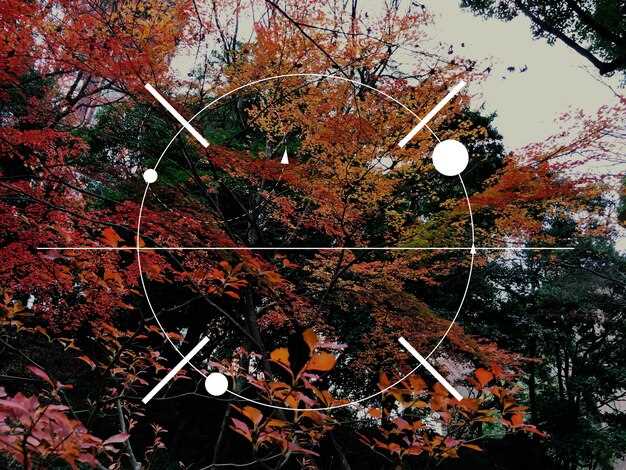

Embarking on a journey to become a skilled visual storyteller requires more than just a keen eye for capturing captivating images. It demands a deep understanding of the intricate art of composition, a language that speaks volumes without uttering a single word. By harnessing the power of composition techniques, photographers can elevate their work to new heights, creating images that leave a lasting impression on viewers.
Within the realm of visual storytelling, composition serves as the foundation upon which the narrative unfolds. It is the art of arranging elements within the frame, carefully considering their placement, balance, and relationship to one another. Through the skillful use of composition, photographers can guide the viewer’s gaze, evoke emotions, and convey a specific message or story.
Composition is not merely a set of rules to be followed, but rather a language that allows photographers to express their unique vision and perspective. It is a symphony of lines, shapes, colors, and textures, orchestrated to create a harmonious and impactful visual experience. By mastering the art of composition, photographers gain the ability to transform ordinary scenes into extraordinary works of art, capturing the essence of a moment and inviting viewers to delve deeper into the story being told.
Understanding the Rule of Thirds
Exploring the Art of Visual Composition
Introduction

When it comes to creating visually captivating photographs, understanding the rule of thirds is essential. This fundamental principle of composition allows photographers to create balanced and engaging images that draw the viewer’s attention. By dividing the frame into nine equal parts using two horizontal and two vertical lines, the rule of thirds provides a framework for placing key elements in a photograph.
Creating Balance and Interest
The rule of thirds encourages photographers to avoid placing the main subject of their image directly in the center. Instead, by positioning the subject along one of the intersecting lines or at one of the four points where the lines meet, the composition becomes more dynamic and visually appealing. This technique creates a sense of balance and interest, as the viewer’s eye is naturally drawn to these areas of the frame.
Furthermore, the rule of thirds can be used to create a sense of movement and direction within a photograph. Placing elements along the lines or at the intersections can guide the viewer’s gaze and lead them through the image, enhancing the overall visual impact.
Applying the Rule of Thirds
Understanding the rule of thirds is just the first step; applying it effectively requires practice and experimentation. By consciously considering the placement of key elements within the frame, photographers can create compositions that are visually striking and emotionally engaging.
It’s important to note that the rule of thirds is not a strict rule, but rather a guideline that can be adjusted and adapted to suit the specific needs of each photograph. As with any artistic technique, there are times when breaking the rule can result in a more powerful image. However, by understanding and mastering the rule of thirds, photographers gain a solid foundation for creating visually impactful photographs.
In conclusion, the rule of thirds is a powerful tool for enhancing the visual impact of photographs. By understanding how to effectively use this composition technique, photographers can create balanced and engaging images that captivate the viewer’s attention. So, next time you’re out capturing moments with your camera, remember to apply the rule of thirds and watch your photographs come to life.
Creating Balance and Symmetry in Your Photos
When it comes to capturing visually impactful photographs, one important aspect to consider is creating balance and symmetry. By carefully arranging the elements within your frame, you can achieve a sense of harmony and equilibrium that draws the viewer’s attention and enhances the overall composition of your image.
Balance refers to the distribution of visual weight within a photograph. It involves arranging the various elements in a way that creates a sense of stability and equilibrium. Achieving balance can be done through the careful placement of objects, colors, and textures, as well as through the use of symmetry.
Symmetry, on the other hand, involves creating a mirror-like reflection or a sense of equal weight on both sides of the frame. It can be achieved through the use of symmetrical subjects, such as buildings or natural formations, or by carefully positioning objects within the frame to create a symmetrical composition.
One way to create balance and symmetry in your photos is by using the rule of thirds. This compositional guideline suggests dividing your frame into a grid of nine equal sections by placing two horizontal and two vertical lines. By aligning your main subject or points of interest along these lines or at their intersections, you can create a visually pleasing and balanced composition.
- Experiment with different angles and perspectives to find the most balanced composition for your subject.
- Consider the placement of objects and their visual weight within the frame.
- Use leading lines or repeating patterns to guide the viewer’s eye and create a sense of balance.
- Explore the use of symmetry in your compositions, whether through natural or man-made subjects.
- Remember that balance and symmetry can be achieved through both horizontal and vertical orientations.
By incorporating these techniques into your photography, you can create visually striking images that captivate and engage your audience. So, next time you’re out capturing photos, don’t forget to consider the importance of balance and symmetry in enhancing the visual impact of your compositions.
Utilizing Leading Lines to Guide the Viewer’s Eye
Directing the viewer’s gaze and creating a sense of depth and movement in a photograph can be achieved through the strategic use of leading lines. These lines, whether they are straight, curved, or diagonal, serve as visual pathways that guide the viewer’s eye towards the main subject or focal point of the image.
By incorporating leading lines into your composition, you can create a dynamic and engaging visual experience for the viewer. These lines can be found in various elements within a scene, such as roads, fences, buildings, or natural formations like rivers or tree branches. They can also be created artificially, using objects or props to create lines that lead towards the subject.
Leading lines have the power to draw the viewer’s attention and create a sense of movement within the frame. They can be used to emphasize perspective, leading the viewer’s eye from the foreground to the background, or from one side of the frame to the other. By carefully positioning these lines, you can control the viewer’s visual journey and enhance the overall impact of your photograph.
When utilizing leading lines, it is important to consider their direction and placement within the frame. Horizontal lines can create a sense of calmness and stability, while vertical lines can convey strength and power. Diagonal lines, on the other hand, can add a sense of dynamism and energy to the composition.
Additionally, the use of leading lines can also help to create a sense of depth in a two-dimensional photograph. By placing lines in the foreground, middle ground, and background, you can create layers within the image, giving it a three-dimensional feel. This can add visual interest and draw the viewer further into the scene.
In conclusion, utilizing leading lines is a powerful composition technique that can greatly enhance the visual impact of your photographs. By strategically incorporating these lines into your composition, you can guide the viewer’s eye, create a sense of depth and movement, and ultimately create a more engaging and captivating image.
Exploring the Power of Framing and Negative Space
In this section, we will delve into the captivating aspects of framing and negative space in photography. By understanding the potential of these techniques, photographers can create visually impactful images that draw the viewer’s attention and evoke emotions.
The Art of Framing
Framing is a powerful compositional technique that involves using elements within the scene to create a frame around the subject. This frame can be created by natural elements such as trees, archways, or windows, or by man-made objects like doors or fences. By incorporating a frame, photographers can guide the viewer’s gaze towards the main subject, adding depth and context to the image.
When using framing, it is important to consider the placement and size of the frame in relation to the subject. A well-executed frame should enhance the subject rather than overpower it. Experimenting with different angles and perspectives can also add visual interest and uniqueness to the composition.
The Power of Negative Space
Negative space refers to the empty or unoccupied areas surrounding the main subject in a photograph. It is a powerful tool that can be used to create balance, emphasize the subject, and evoke a sense of simplicity and minimalism.
By intentionally leaving empty space in the composition, photographers can draw attention to the subject and create a sense of visual tension. Negative space can also be used to convey a sense of scale or emphasize the isolation or solitude of the subject.
When incorporating negative space, it is important to consider the overall balance and harmony of the composition. The placement and size of the subject within the frame, as well as the distribution of negative space, can greatly impact the visual impact of the photograph.
- Experiment with different framing techniques to add depth and context to your images.
- Consider the placement and size of the frame in relation to the subject.
- Utilize negative space to create balance, emphasize the subject, and evoke emotions.
- Pay attention to the overall balance and harmony of the composition when incorporating negative space.
By exploring the power of framing and negative space, photographers can elevate their compositions and create visually captivating images that leave a lasting impression on the viewer.
Incorporating Color Theory to Enhance Mood and Emotion
Exploring the power of color in photography can significantly impact the mood and emotion conveyed in an image. By understanding the principles of color theory and how different colors evoke specific feelings, photographers can create visually compelling and emotionally resonant photographs.
Color theory encompasses the study of how colors interact with each other and how they are perceived by the viewer. By strategically incorporating colors into a composition, photographers can enhance the overall mood and evoke specific emotions in their audience. Colors have the ability to communicate without words, conveying a sense of tranquility, excitement, or even melancholy.
One aspect of color theory that photographers can utilize is the concept of color harmony. This refers to the pleasing arrangement of colors in an image, where colors complement and enhance each other. By selecting colors that are harmonious, photographers can create a sense of balance and unity, resulting in a visually pleasing and emotionally impactful photograph.
Another important consideration is the use of color contrast. By juxtaposing colors that are opposite on the color wheel, photographers can create a dynamic and visually striking image. For example, pairing warm colors like red and orange with cool colors like blue and green can create a sense of tension and energy in the photograph.
Furthermore, the saturation and intensity of colors can also influence the mood and emotion conveyed in a photograph. Vibrant and saturated colors often evoke feelings of excitement and energy, while desaturated or muted colors can create a sense of calmness or nostalgia. By adjusting the saturation levels, photographers can manipulate the emotional impact of their images.
Ultimately, incorporating color theory into photography allows photographers to go beyond capturing a visually appealing image. It enables them to create photographs that evoke specific emotions and connect with viewers on a deeper level. By understanding the principles of color theory and experimenting with different color combinations, photographers can enhance the mood and emotion in their photographs, resulting in more impactful and memorable images.
Experimenting with Different Perspectives and Angles
Exploring various viewpoints and angles can greatly enhance the visual impact of your photographs. By experimenting with different perspectives, you can create unique and captivating images that stand out from the crowd.
One way to achieve this is by changing your physical position in relation to the subject. Instead of shooting from eye level, try getting down low to the ground or climbing up high to capture a bird’s-eye view. These alternative perspectives can add depth and interest to your composition.
Another technique to consider is playing with different angles. Instead of always shooting straight on, try tilting your camera or shooting from a diagonal angle. This can create a sense of dynamism and add a unique visual element to your photographs.
Additionally, you can experiment with unconventional framing techniques. Instead of centering your subject, try placing it off-center or using leading lines to draw the viewer’s eye towards the main focal point. This can create a more visually engaging composition.
Furthermore, don’t be afraid to experiment with perspective distortion. By using a wide-angle lens up close to your subject, you can exaggerate certain features and create a sense of depth and drama in your photographs.
Overall, by exploring different perspectives and angles, you can push the boundaries of traditional composition and create visually stunning photographs that leave a lasting impression on viewers.





